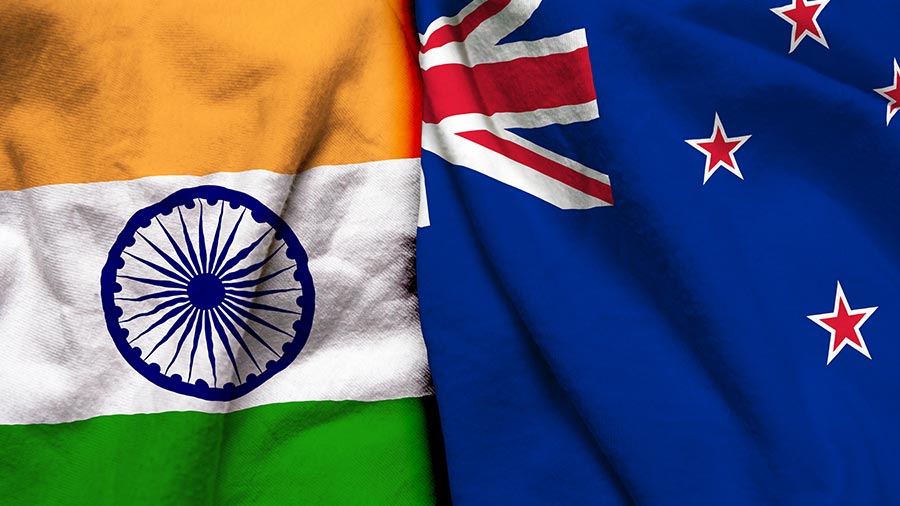India and New Zealand have officially relaunched negotiations for a Free Trade Agreement (FTA) after a 10-year gap. The talks, announced following a meeting between New Zealand’s Trade Minister Todd McClay and India’s Commerce Minister Piyush Goyal in New Delhi, are expected to reshape bilateral trade relations. The resumption comes amid mounting US pressure on India to open its agricultural and dairy sectors, which remain sensitive for Indian farmers.
Significance of the India-New Zealand FTA Talks
The revival of FTA discussions aligns with India’s broader trade objectives. As India actively negotiates agreements with major economies, including the US, European Union, and Australia, re-engaging with New Zealand enhances its trade diversification strategy. New Zealand, on the other hand, seeks greater access to India’s fast-growing market for its agricultural and dairy products.
The FTA, if successfully concluded, could significantly boost trade volumes between the two countries, which stood at $2.3 billion in 2024. The deal is expected to improve market access, reduce tariffs, and strengthen regulatory cooperation.
Key Sectors Under Scrutiny: Agriculture and Dairy
The agriculture and dairy sectors are at the heart of the FTA negotiations. New Zealand, a global leader in dairy exports, is pushing for lower tariffs and expanded market access for its products in India. However, India remains protective of its dairy sector, which supports millions of small-scale farmers.
Indian dairy cooperatives, such as Amul and Nandini, have consistently opposed opening the market to large foreign players. They argue that it could disrupt the livelihoods of local farmers. Indian negotiators are expected to press for safeguarding domestic interests through special tariff protections and quotas.
Geopolitical and Economic Implications
The relaunch of the India-New Zealand FTA talks comes at a time of shifting global trade alliances. With growing US and EU pressure, India faces a balancing act between protecting domestic industries and opening its markets to foreign trade partners.
An FTA with New Zealand would bolster India’s position in the Indo-Pacific trade network, enhancing its influence in the region. Moreover, it could create new opportunities for Indian exporters in areas like pharmaceuticals, IT services, and textiles, while providing New Zealand’s agricultural exporters with greater market access.
Challenges in the Negotiations
While the resumption of talks is a positive step, significant challenges remain:
- Tariff Reductions: New Zealand is seeking lower tariffs on dairy and agricultural products, which India may resist to protect its domestic farmers.
- Market Access: India will push for improved access for its services sector, particularly in IT and technology, where it has a competitive edge.
- Regulatory Standards: Harmonizing regulatory standards will be essential to avoid technical trade barriers.
The negotiations will require both sides to find common ground on these issues. India is expected to seek special safeguards to prevent market flooding by New Zealand’s dairy products.
Impact on Domestic Industries
If the FTA is finalized, it could impact India’s dairy industry significantly. While it may lead to lower prices for consumers, it could pose a challenge for small-scale farmers. The government will likely introduce protective measures, such as phased market opening and stringent quality standards, to shield local producers.
For New Zealand, the deal offers a chance to expand its market reach in one of the world’s fastest-growing economies. Enhanced trade with India could boost New Zealand’s agricultural exports and contribute to its economic growth.
The resumption of India-New Zealand FTA talks after a decade is a major step towards strengthening bilateral trade relations. However, the road ahead is complex, with sensitive sectors like agriculture and dairy posing significant hurdles. Both nations will need to strike a balance between market liberalization and protecting domestic interests.
As the negotiations progress, the outcome of this FTA will be closely watched, not only by the two countries but also by major global economies aiming to strengthen their trade partnerships with India.


Leave a Reply